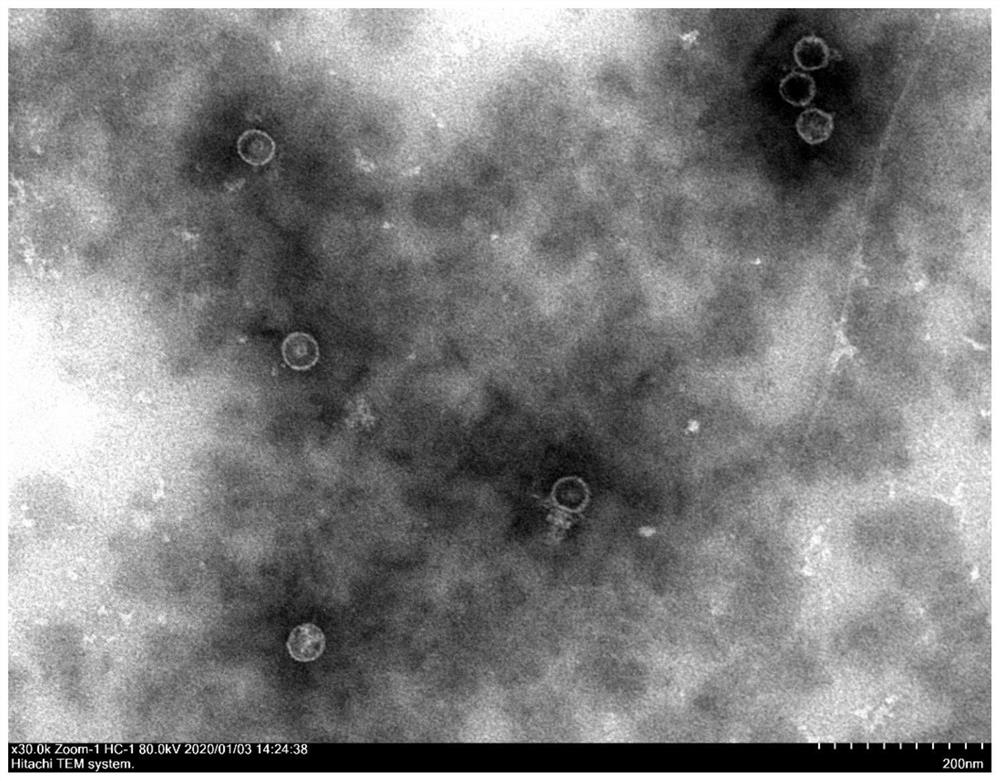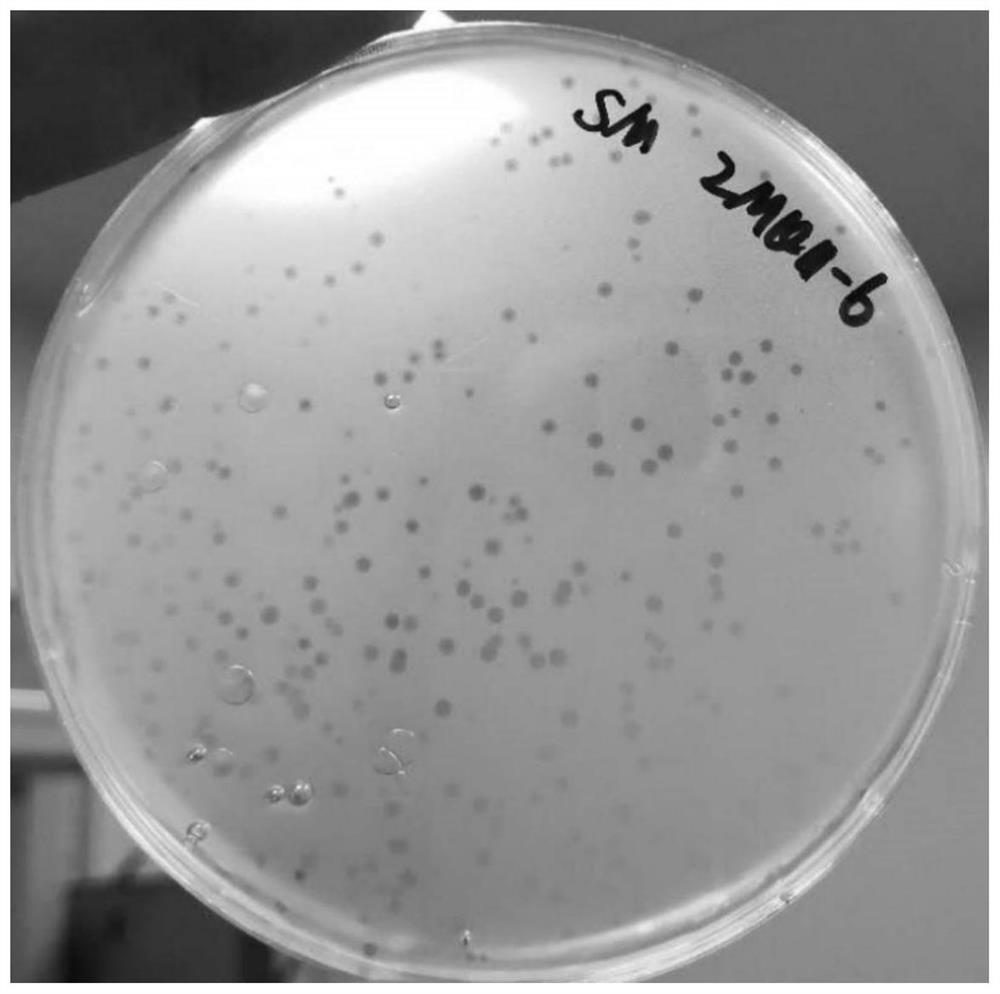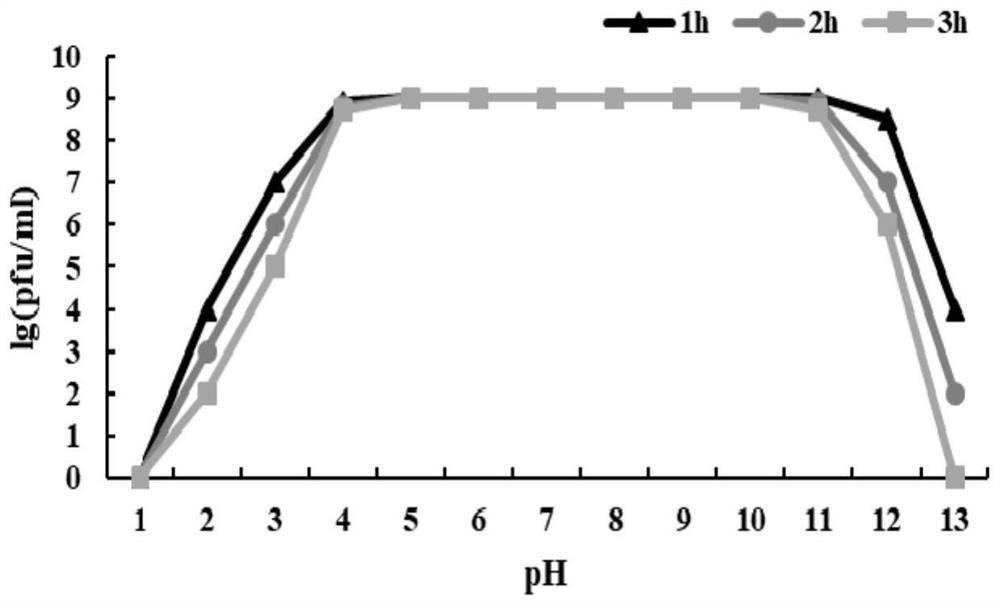A strain of Clostridium welchii phage, its phage composition and its application
A technology of Clostridium welchii and Clostridioides welchii disease, applied in the field of microorganisms, can solve problems such as antibiotic residues, and achieve the effects of fast onset, strong applicability, and high acid-base stability
- Summary
- Abstract
- Description
- Claims
- Application Information
AI Technical Summary
Problems solved by technology
Method used
Image
Examples
Embodiment 1
[0035] The isolation and purification of embodiment 1 phage
[0036] 1. Isolation and identification of pathogenic bacteria
[0037] From a chicken farm in Shandong, sick chickens with necrotic enteritis were collected for dissection, and pathogenic bacteria were isolated from the chicken intestines. The pathogenic bacteria were anaerobically cultured in 1% glucose-5% sheep blood culture medium, and the obtained pathogenic bacteria were identified by microscopic examination and molecular identification by corresponding PCR.
[0038] Results: On the medium of 1% glucose-5% sheep blood, a large off-white colony was isolated, with a double-layer hemolytic ring on the edge of the colony, which was identified as Clostridium welchii type A by PCR with specific primers for Clostridium welchii.
[0039] 2. Isolation of Clostridium welchii phage
[0040] Take 50mL of fecal sewage from chicken farms or 5g of chicken intestines and livers, add 500μL of Clostridium welchii type A isolat...
Embodiment 2
[0044] Morphological characteristics of embodiment 2 Clostridium welchii bacteriophage PMQ06
[0045] The above-mentioned isolated phage PMQ06 suspension was dropped on a copper grid covered with polyvinyl formaldehyde film, stained with 2% phosphotungstic acid for 5-10 minutes, and observed with a Hitachi HT7700 transmission electron microscope after drying.
[0046] Such as figure 1 As shown, it was observed under the electron microscope that the head of phage PMQ06 has a polyhedral structure, the diameter of the head is about 46 nm, and there are 6 short tail filaments. According to the definition of the International Committee on Taxonomy of Viruses (ICTV), the morphology of bacteriophage PMQ06 conforms to the characteristics of the Brachyphage family and belongs to the Brachyphage family.
Embodiment 3
[0047] The potency determination of embodiment 3 Clostridium welchii bacteriophage PMQ06
[0048] Dilute the proliferated phage stock solution 10 times, and take 10 -6 、10 -7 、10 -8 , 3 dilutions. Take 120 μL of the above-mentioned 3 dilutions of phage and 120 μL of the host bacterial suspension, mix them into sterile EP tubes, and mix well. After incubating at 37°C for 5 minutes, adopt the soft agar plate method and invert the incubator at 37°C for anaerobic culture for 5-6 hours, and observe the results. Two parallels were made for each dilution gradient, and the dilution of phage plaques between 30 and 300 was used as the standard for counting, and the average value of the two parallels for each dilution was taken to calculate the titer of phage.
[0049] Phage titer (pfu / mL) = average number of plaques × dilution factor × 10.
[0050] The results showed that the phage titer of PMQ06 was 3.40×10 9 PFU / mL.
PUM
 Login to View More
Login to View More Abstract
Description
Claims
Application Information
 Login to View More
Login to View More - R&D
- Intellectual Property
- Life Sciences
- Materials
- Tech Scout
- Unparalleled Data Quality
- Higher Quality Content
- 60% Fewer Hallucinations
Browse by: Latest US Patents, China's latest patents, Technical Efficacy Thesaurus, Application Domain, Technology Topic, Popular Technical Reports.
© 2025 PatSnap. All rights reserved.Legal|Privacy policy|Modern Slavery Act Transparency Statement|Sitemap|About US| Contact US: help@patsnap.com



